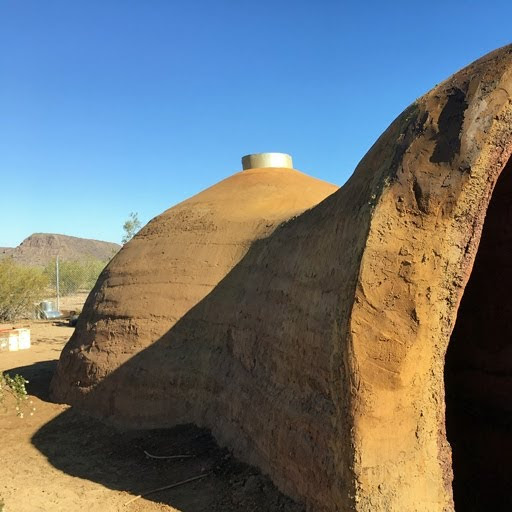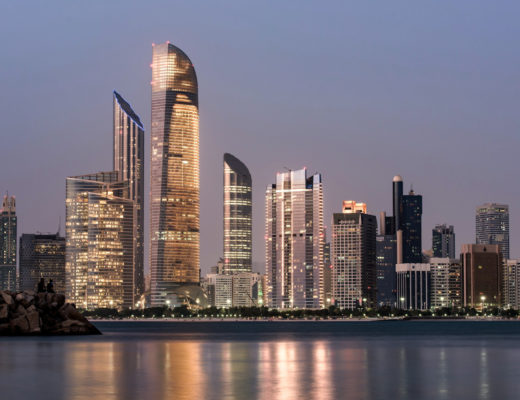June 5 is celebrated annually as UN World Environment Day. With an ongoing debate on embracing more environmentally-friendly construction materials and increase sustainability in the built environment, we are highlighting eight materials that are helping architects and property developers reduce the carbon footprint of their buildings.
Above image: House with thatched roof in Co Đong, Vietnam by 1+1>2 Architects; photo: Hiroyuki Oki
BAMBOO
Having been heralded as one of the most sustainable materials in the world, bamboo has steadily been gaining ground as a material of choice. It grows at an incredibly fast speed, with some species growing up to three feet in 24 hours. Technically, bamboo is a perennial grass, not a wood, and it continues spreading and growing without having to be replanted after harvest. It can be found on every continent except Europe and Antarctica.
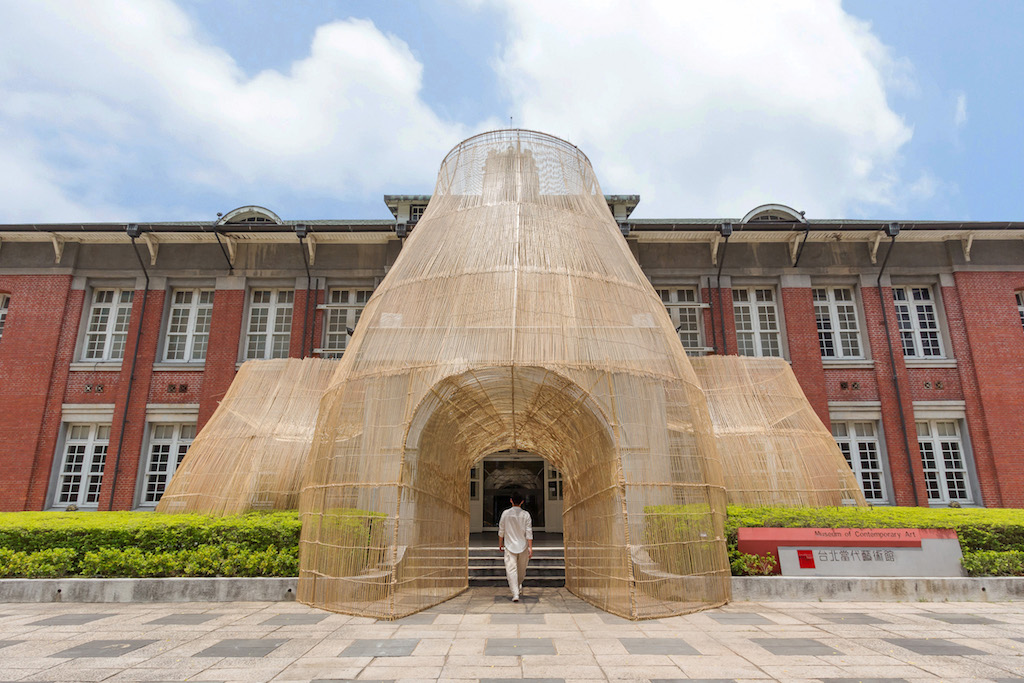
The Fish Trap installation in Nantou by Taiwanese designer Cheng-Tsung Feng was inspired by the traditional crafts of the Thao indigenous tribe that lives near Sun Moon Lake, Taiwan’s alrgest body of water.
As a building material, despite being lightweight, bamboo has a high strength-to-weight ratio and exceptional durability – even greater compressive strength than brick or concrete — so it can withstand extreme conditions without having to be replaced often, unlike some of the other fast-growing, sustainable items such as hemp, hence making bamboo a viable choice for flooring and cabinetry. However, it requires treatment to resist insects and rot as untreated bamboo has a type of starch that insects like, and it can swell and crack when it absorbs water.
HAY
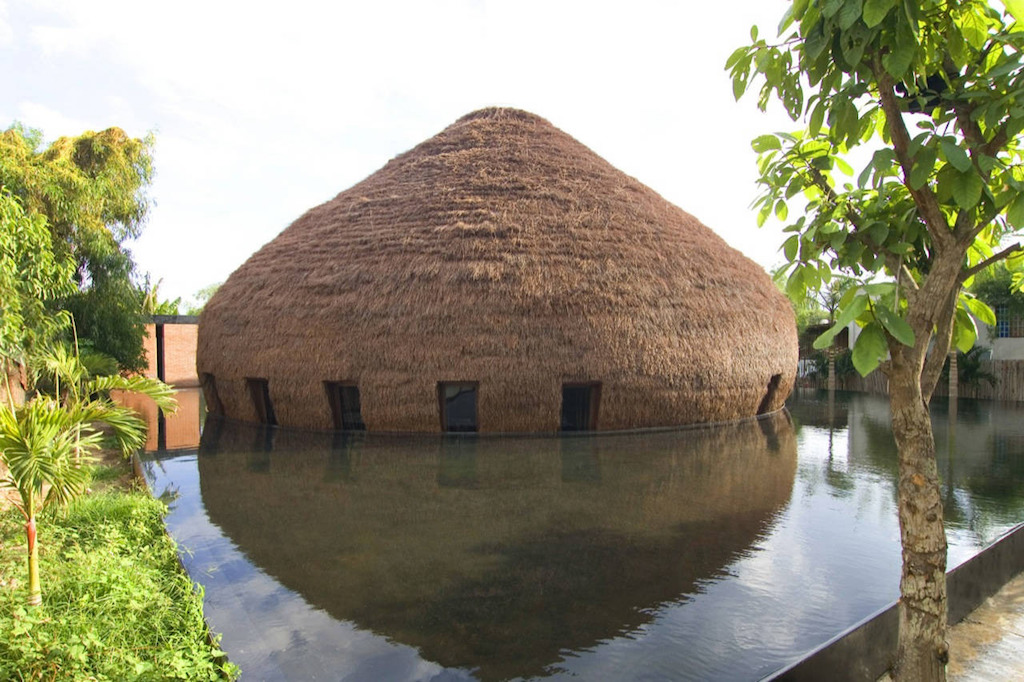
Wine and Water Bar in Thu Dau Mot Town, Binh Duong, Vietnam by Vo Trong Nghia Architects; photo: Phan Quang
Thatched roofs are one of the integral components of traditional Vietnamese architecture using vernacular techniques. The mix could be made of thatch, straw, palm, clay, tiles and leaves (such as Nipa in south Vietnam) among other additions. It is then layered onto a wood or bamboo base structure. The results are creative and vary depending on the regional style. They also provide good insulation from hot and wet climates and great sound absorption.
CORK
Like bamboo, cork is a preferred building material due to its ability to grow fast. It is essentially the bark of a tree that makes it a sustainable source. Cork is a great choice due to its flexibility and resilience – it is capable of withstanding pressure and preserving its original shape. Its noise absorption abilities also make it perfect for insulation sheets, and its shock absorption qualities make it well-suited for sub-flooring. If left uncoated, cork is naturally fire-resistant and it doesn’t release toxic gases when it does burn. This also makes cork a good thermal insulator – that explains why it’s often used as a hotpot stand.
While it is fairly impermeable and does not absorb water or rot, over time however, it does become more brittle. The only other drawback is that it is not abundantly found and primarily available only in the Mediterranean.
PRECAST CONCRETE
While concrete is extremely popular as a building material, lately it has been getting a lot of flak for releasing CO2 during its manufacturing process and polluting the air. Precast concrete slab is formed at a manufacturer’s site and shipped in whole sections to construction sites. The outer layers often envelop a lightweight filler, like foam insulation. Precast concrete slabs commonly are used for walls and building façades because they are suitable for all types of weather, but certain types can be used for floors and flat roofs, especially roof decks.
Precast concrete slabs’ sustainability factor is higher than many traditional poured concrete options because the slabs require much less energy to produce and assemble. Additionally, precasting concrete allows builders to cure the material in a controlled environment, instead of potentially exposing it to a variety of unfavourable conditions while curing it at a construction sit such as heavy rainfall and snow. Improper curing can lead to cracks and structural faults within the concrete, which go against most building regulations. It’s also a good regulator of indoor temperature in buildings in addition to being economical.
RAMMED EARTH
Rammed earth technology has been used in several human civilisations around the world for thousands of years. Two of the main reasons being easy availability and eco-friendly attributes. Modern rammed earth buildings can be made safer by the use of rebar or bamboo, and mechanical tampers can help reduce the amount of labour required to create sturdy walls. What’s more natural than the dirt under your feet? In fact, walls that have a similar feel to concrete can actually be created with nothing more than dirt tamped down very tightly in wooden moulds. Rammed earth is a technology that has been used by human civilization for thousands of years, and can last a very long time. Modern rammed earth buildings can be made safer by use of rebar or bamboo, and mechanical tampers reduce the amount of labor required to create sturdy walls.
MYCELIUM
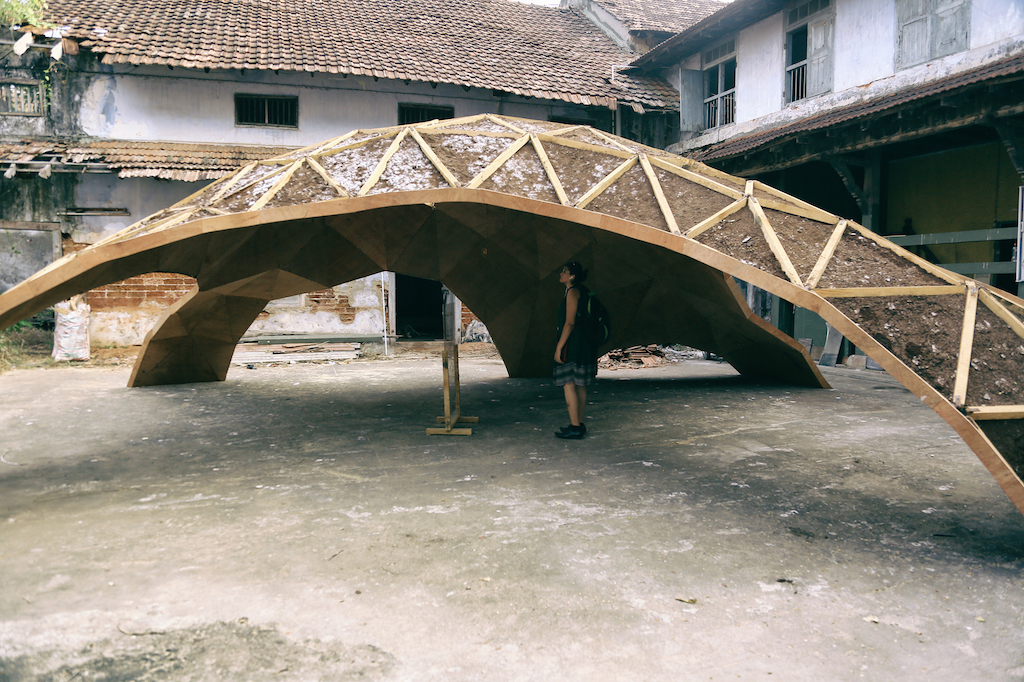
Shell Mycelium installation at the Kochi Muziris Biennale 2016 Collateral in India; photo: Krishna and Govind Raja
Mycelium is a futuristic lab-made building material that’s completely organic – it is made of the root structure of fungi and mushrooms. It can be engineered to grow around a composite of other natural materials, like ground-up straw, in moulds or forms, then air-dried to create lightweight and strong bricks or other shapes.
The Shell Mycelium Pavillion is a collaboration between BEETLES 3.3 and Yassin Areddia Designs and offers an alternative to conscious design through temporary structures. It was exhibited at the Kochi Muziris Biennale 2016 Collateral in India.
WOOD

Community library by SHAU Architects in Indonesia’s Semarang city is made out of local Java wood; photo: KIE
One of the most traditional and oldest materials in construction, wood offers many advantages over more industrial building materials such as concrete or steel. Not only do trees absorb CO2 as they grow, but they also require much less energy-intensive methods to process into construction products. Ethically-managed forests are also renewable and sustain a biodiverse habitat.
FERROCK
Ferrock is a relatively new material that uses recycled materials including steel dust from the steel industry to create a concrete-like building material that is even stronger than concrete. An important attribute is that it absorbs and traps carbon dioxide as part of its drying and hardening process – making it not only less CO2 intensive than traditional concrete, but actually carbon neutral.
You might also like:
SHAU architects designs elevated community library in Indonesia’s central Java using local wood
IDIN Architects designs boutique hotel along Kwai River using rammed earth





